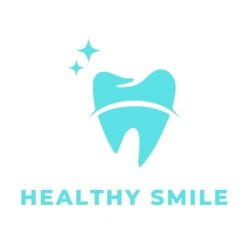One of the best cosmetic procedures for achieving healthy-looking skin is Botox. Botox, however, has emerged as one of the most effective and well-liked treatments throughout time. Botox injections have proved effective in eliminating wrinkles and fine lines, which helps the skin appear younger. Furthermore, Botox is the name for Botulinum Toxin Type A. Botulinum is a potent neurotoxin whose type A aids in the laboratory production of Botox. The botox is fully sterile and can be used to treat a variety of conditions, including severe migraines, excessive blinking, and facial wrinkles.

Information to consider before receiving a Botox injection
You need to get ready for your Botox procedure before you start. Here is a rundown of some things to be aware of:
- Find out if it applies to you.
You cannot receive a botox treatment if you have specific medical issues. As a result, you must use caution throughout these.
- Attempt to relax more
Treatment with Botox is relatively rapid and easy. However, a lot of people experience anxiety before receiving a botox injection. Break the myths and relax about your stress if you’re feeling it.
- Mention any drugs you are taking.
Before getting botox therapy, you must disclose any medications you are currently using. Blood thinners, muscle relaxants, and other drugs are only a few of the ones that could interact negatively with botox.
- Stay away from smokes
You need to quit smoking if you’re getting botox injections. The likelihood of bruising from botox is increased by smoking. It will also shorten the time needed for healing.
- Skin purification
Make sure your skin is clean and clear of impurities before getting the botox injection. Wash your face thoroughly, then rinse with warm water. You can choose to pat and dry your face after that.
How can botox bruising be avoided?
Botox forehead bruising is very typical. To avoid bruising, there are specific actions you should do both before and after the botox injection.
- Before the procedure
Avoid anything that could thin your blood.
Some supplements may cause your blood to thin as a result of their effects. These include ginseng, green tea, ginseng, ginger, and garlic. Seven days before the treatment, you should stop taking them.
Stop using blood thinners.
It is preferable to take a few days off from your medicine if you are taking one. After receiving a botox injection, the body will suffer from blood thinning, which can be avoided by taking blood-thinning medications. Due to these medications, you might not be able to receive treatment for the majority of diseases.
For 24 hours, abstain from alcohol.
A day before receiving botox therapy, you should stop drinking alcohol. An increased risk of botox bruising results from the anti-platelet action of the drug.
- While receiving treatment
Frost the area
Applying ice to the targeted area will numb it up before you start the botox therapy. It aids in constricting the blood vessels, reducing the danger of botox bruising even further.
Take into account using homoeopathic arnica
Mountain daisy is another name for arnica in homoeopathy. Start using it right away to lessen the chance of botox bruising. The market has the arnica tablets readily available. For the following five days, you can start the day before and keep going.
Add-on for bromelain
Since it helps to reduce the risk of inflammation and edoema, bromelain supplements are thought to be helpful. When taken with vitamin C, several supplements containing bromelain aid to strengthen the capillaries.
- Following the procedure
Treatment with ice
In order to avoid bruising from a Botox injection, this is one of the most crucial things you should do. Apply some frozen ice from a bag to the region that has been treated. Keep it cool at all times.
For one or two days, refrain from exercising
Even though it’s good for you to exercise regularly, you shouldn’t if you’ve recently had cosmetic surgery. The blood flow, pressure, and heart rate can all be affected by excessive physical exercise. Additionally, this slows down the capillaries’ ability to repair quickly.
Use the additional pillow.
Use an additional pillow to keep your head up before going to bed. This promotes quicker recuperation.
Although Botox bruising occurs frequently in many people, there are certain techniques to avoid it. To reduce the possibility of botox bruising, you should choose to consult with the professionals at Highfield Dental & Facial Clinic.
